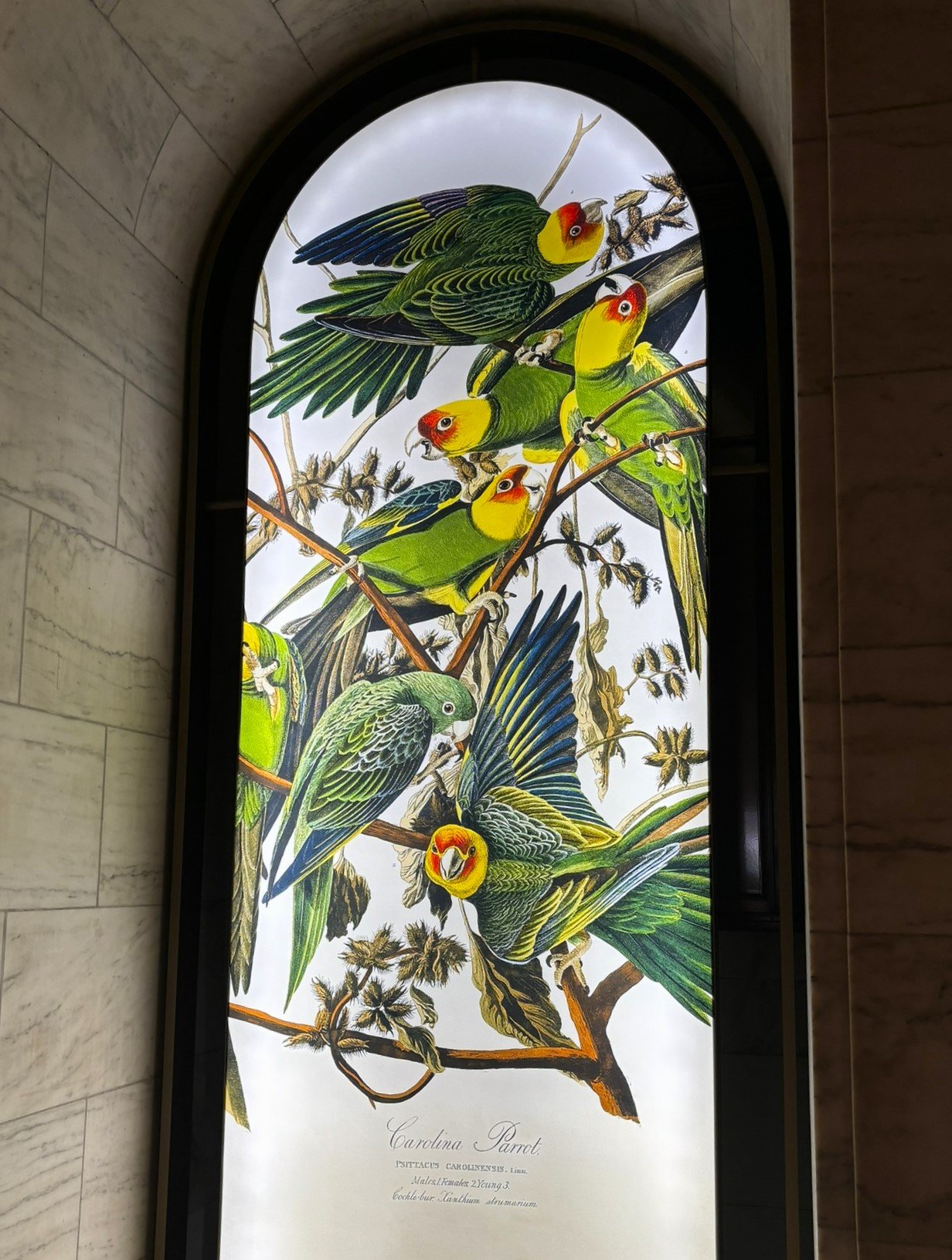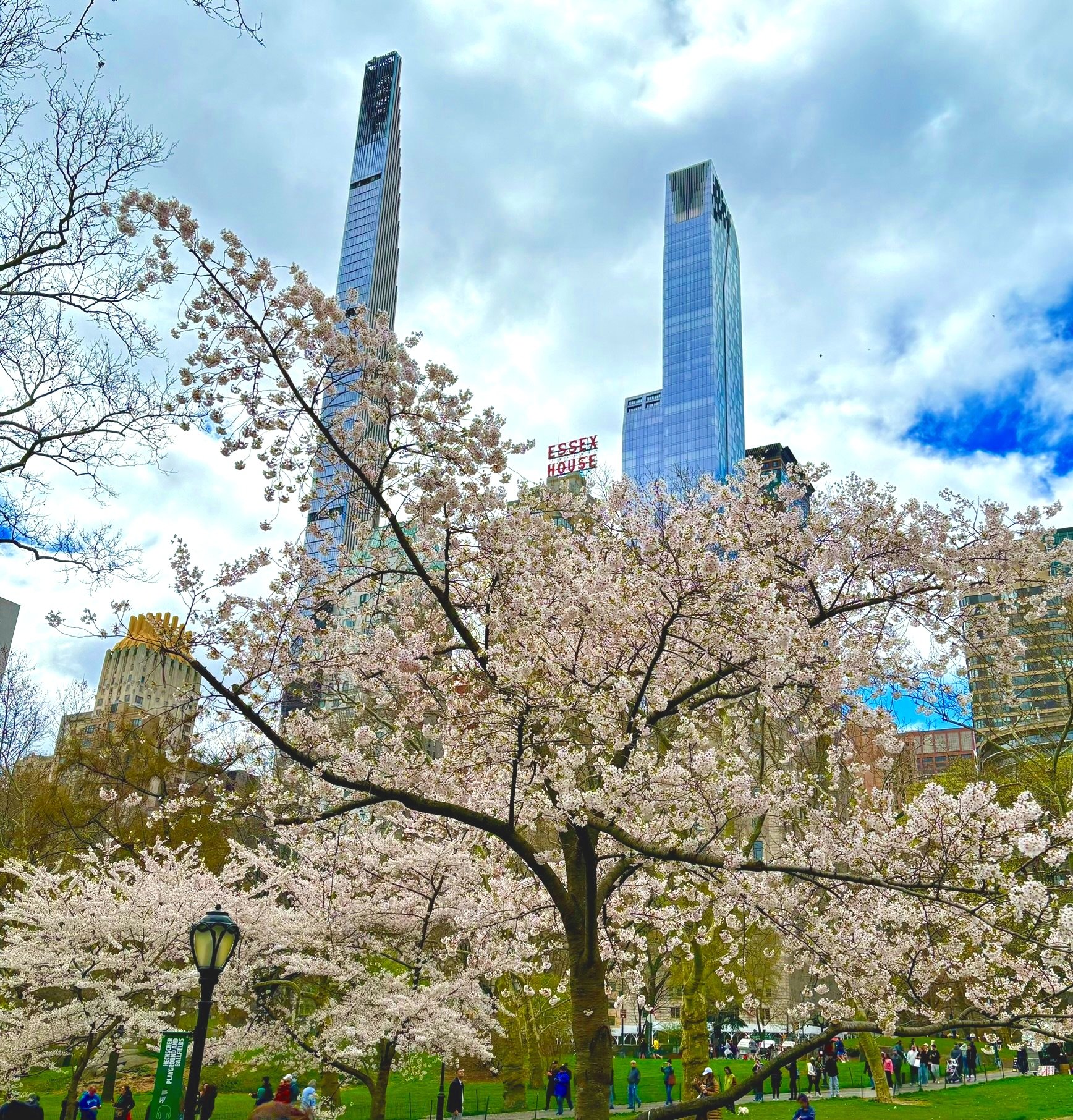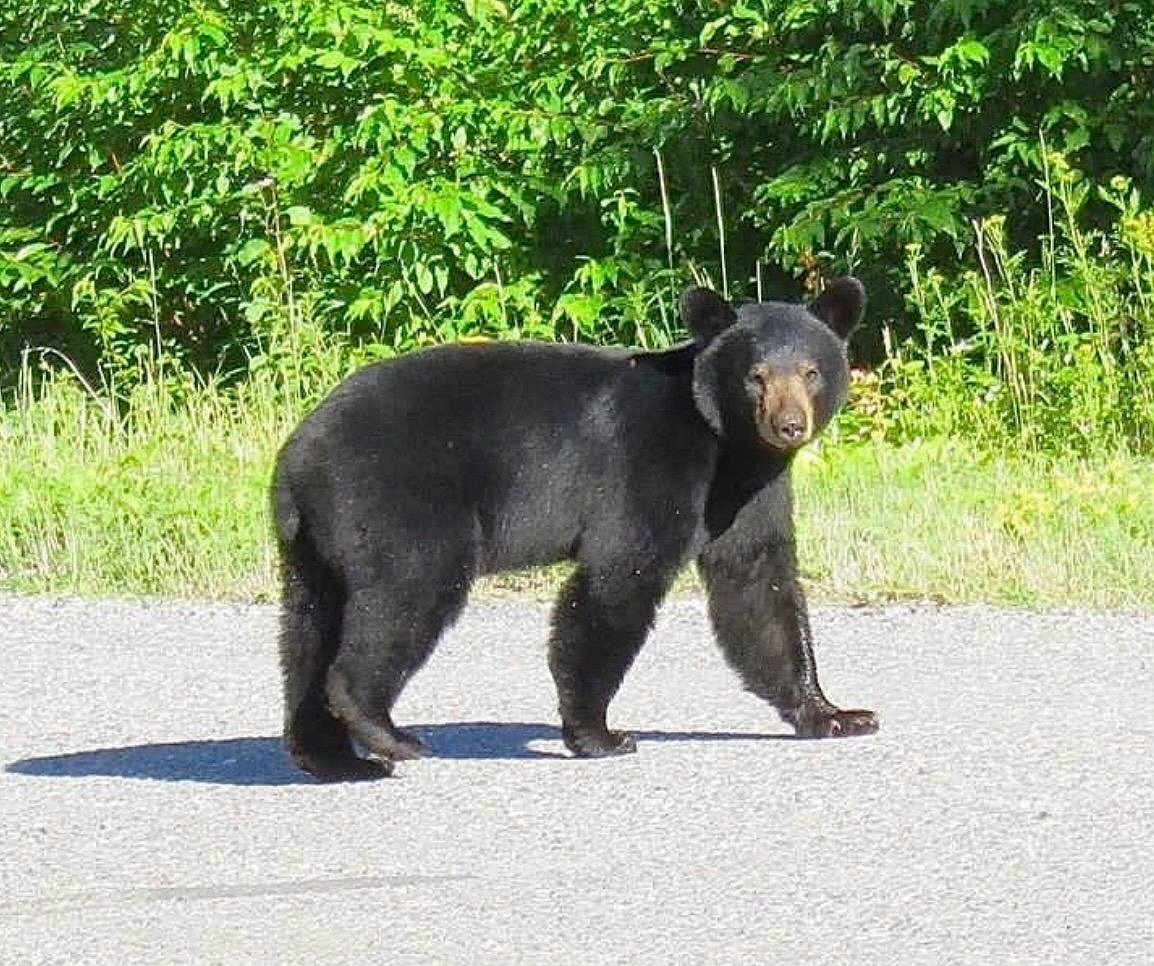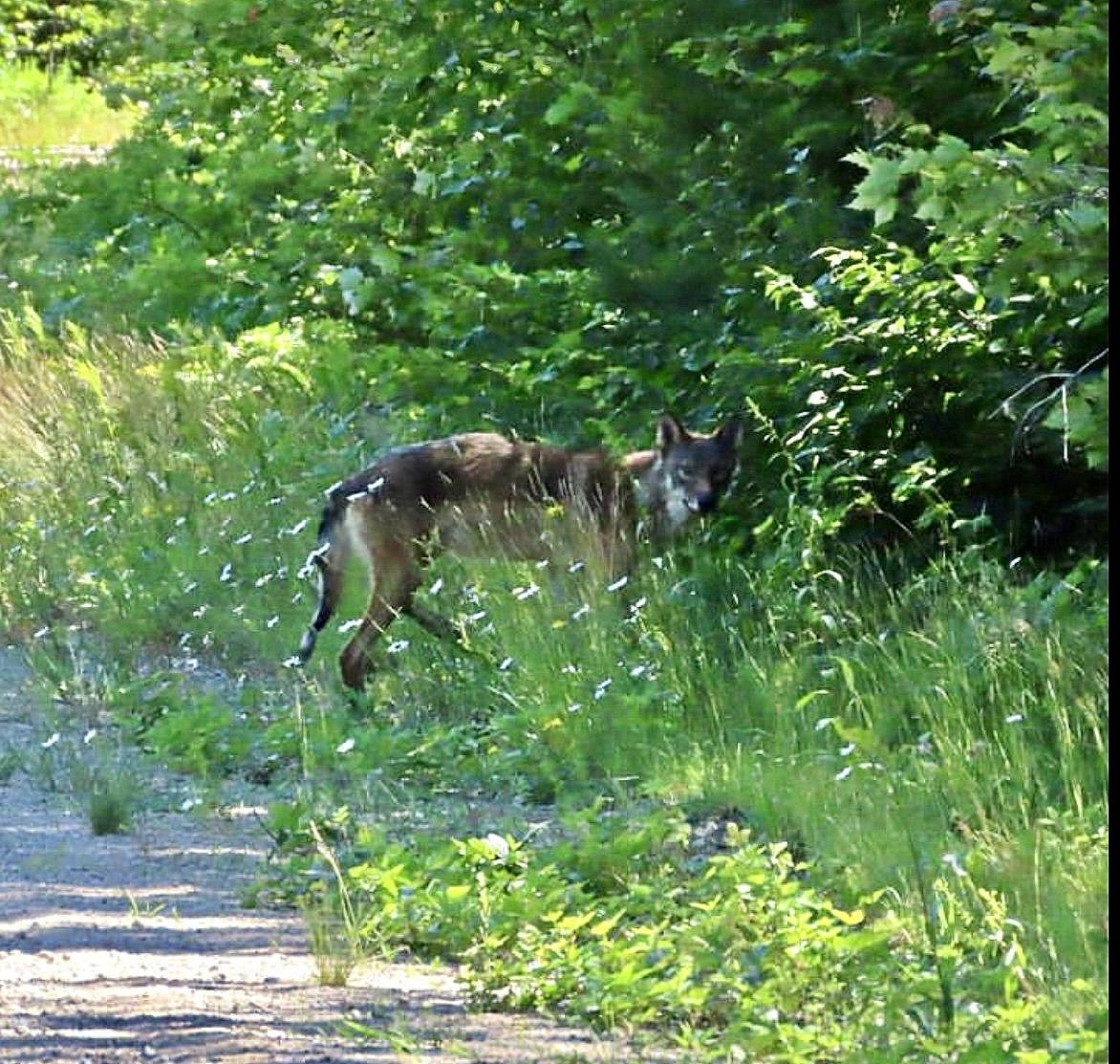Sorry to be tardy with this posting. I’ve been dealing with some heavy family stuff, and have not been able to get to the blog.
My last bit of serious birding took place in early April in The Ramble, a wilder than average section of Central Park in Manhattan. I’ve been following a number of Central Park birders on social media for years now, and so wanted to get there to see Flaco the escaped Eurasian Eagle-Owl. Alas, Flaco succumbed to the toxic levels of rat poison in his wild diet before I could get there.
Yankee Stadium, where a flock of Blue Jays from Toronto beat the NY Yankees at their Home Opener on April 5th.
But The Ramble, and in fact all of New York, did not disappoint. My lovely wife, Julia, and I took in a Yankees/Blue Jays game (the birds won!), and enjoyed our meanderings of the city, including the New York Public Library main branch on 42nd Street, which is one of my favourite buildings in the world. The library returned my love by keeping Julia and me safe during the great Manhattan earthquake of 2024. We were in the reading room when the quake struck, and felt nothing at all. It was only as we left the building did we hear everyone talking about the intensity of the shaking. I mean, what can’t a building full of books do?
A Blue Jay (Cyanocitta cristata) makes a great catch on an acorn in Central Park.
The Ramble, which became world famous during the early pandemic for an ugly confrontation, is a haven for birds in the middle of an impossibly busy city.
I spent a lovely, sunny Sunday morning wandering The Ramble and seeing some spring birds I wouldn’t re-see in Canada for close to a month. And I checked off a bucket-list experience, getting up close and personal with a European Starling (Sturnus vulgaris) in the park that started it all for this now widespread European immigrant.
This starling, named Mortimer, became my friend just north of the Met.
Legend has it that Shakespeare appreciator Eugene Schieffelin released forty pairs of starlings into Central Park in 1890 as part of a project to introduce to the New World all the species mentioned in Shakespeare’s plays. Starlings, one of nature’s great mimics, show up in Henry IV, Act One, when the character Hotspur plots to drive King Henry mad by having one of these birds repeat the name of Hotspur’s brother, whom Henry holds prisoner:
I’ll have a starling shall be taught to speak
Nothing but “Mortimer,” and give it him
To keep his anger still in motion.
Seated on a bench, waiting for Julia to return from the Metropolitan Museum of Art, I was approached by a most colourful and friendly descendant of Schieffelin’s birds.
Enjoy my too-brief time in New York.
It is so rare for me to be able to photograph a Golden-crowned Kinglet (Regulus satrapa) because they flit about so quickly and nervously. But this urban bird was fearless.
A female Northern Cardinal (Cardinalis cardinalis) in the city so nice they named it twice.
One of many, many White-throated Sparrows (Zonotrichia albicollis) near a feeder station in The Ramble.
An Eastern Towhee (Pipilo erythrophthalmus) attracted a LOT of excited birders near Belvedere Castle in The Ramble, including another Canadian. We recognized each other by our accents.
A bit more New York
One of my favourite buildings in the world.
This is The Book (and Bird) Room after all. New York Public Library reading room.
The Carolina Parrot, sadly extinct, but memorialized in this window at the NYPL.
Spring was audacious in Central Park in early April.
This not-super-accurate Bald Eagle statue sits atop the entrance to Grand Central Market in midtown.
The Falconer, a sculpture by English artist George Blackall Simonds, stands at the bottom of The Ramble.
A surprisingly comfortable bench built into a rustic fence at Belvedere Castle.
Couldn’t resist including this shot of the Golden-crowned Kinglet in action.
Your humble reporter, with his classic frown-smile (can’t explain it), in High Line Park in Chelsea, Manhattan.
“A lover’s eyes will gaze an eagle blind”









































